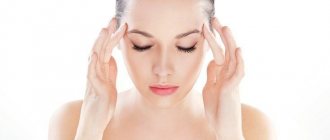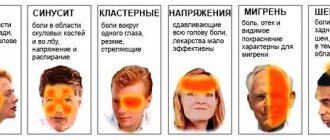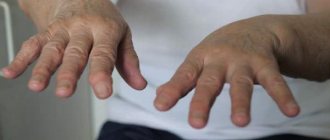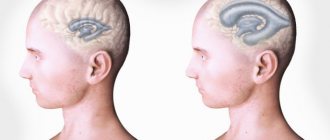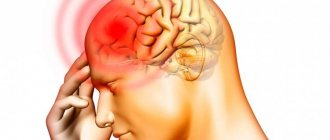What do headaches, heaviness of eyes and nausea mean?
Types of headaches
Tension pain
The most common headaches are tension headaches. They may indicate overwork or, in the worst case, a head or neck injury. Basically, this type of headache is concentrated in the upper part of the head and may be accompanied by a pulling sensation in the eye area. Any aspirin tablet will help you quickly get rid of such pain.
Cluster pain
The rarest type of headache is cluster headache. It manifests itself in the frontal part and can radiate to the eye area, creating an unpleasant pressing or squeezing sensation. Often such pain is accompanied by lacrimation and a runny nose, but the causes of cluster pain, unfortunately, are still not precisely known.
Migraine
Migraines plague many people. These are pains that occur in the temples or forehead, often there is a pressing sensation in the eyes and all this can be accompanied by nausea. In some cases, migraine is indicated by numbness of the limbs and speech impairment; in such cases, it is necessary to urgently call a doctor. One way or another, migraine is the least of the troubles, which can be characterized by pain in the forehead and temples, pressure on the eyes and nausea.
What causes pressure on the eyes?
The feeling of pressure on the eyes occurs when overwork or severe mental stress. But most often this is a sign of increased intracranial pressure. Only competent specialists can tell you for sure the cause of pressure on your eyes. The cause of discomfort in the eyes and headaches may also be an allergy; in this case, it is necessary to undergo appropriate tests to identify the causes of the allergy.
It is quite possible that you have recently changed the climate, having arrived from a distant country, or have experienced a stressful situation. Then the pressure on the eyes will soon pass, but, nevertheless, be sure to go to the ophthalmologist and measure the pressure every day.
When does nausea occur?
Nausea can indicate many disorders and changes in the body.
But when we are talking about nausea as a syndrome accompanying headaches, most likely poisoning and indigestion will have to be excluded. If nausea is accompanied by headaches, this may indicate an intracranial hematoma or brain tumor. The presence of a particular disease can only be detected after an MRI, and treatment must be prescribed by a surgeon; surgery may be required, so do not delay visiting a specialist. Pain in the head: in the forehead, combined with pressure on the eyes and nausea, indicate fatigue or some kind of illness; in any case, you should consult a doctor
Treatment of pain in the temples
The selection of medications for the treatment of temporal pain is carried out by a specialized doctor, depending on the cause and etiology of its development, the age and condition of the patient. The main drugs that can be prescribed for temporal pain include:
- Analgesic, antispasmodic and non-steroidal drugs (Ibuprofen, Analgin, Spazmalgon, Paracetamol). The drugs can reduce pain attacks during migraines, point and cluster pain, but do not eliminate the cause of their development.
- Diuretics (Indapamide, Furosemide). Prescribed for blood and intracranial pressure to reduce swelling and remove excess fluid from the body and dilate blood vessels. As a result of a decrease in blood or cerebrospinal fluid pressure on the brain, the pain attack decreases or disappears.
- Glucocorticosteroids (Prednol, Prednisolone). Prescribed for acute vasculitis as an anti-inflammatory and antitoxic agent.
- Beta blockers (Atenolol, Anaprilin, Metoprolol). The drugs are indicated for high blood pressure to reduce the frequency and force of contraction of the heart muscles, as well as prevent arrhythmia.
- Antidepressants (Fevarin, Mianserin). Prescribed in the complex treatment of tension pain, neuroses and migraines of various etiologies.
- Sedatives (Novo-Passit, Nozepam, Valerian). Necessary for the treatment of psychogenic pain, as well as mitigating the impact of psychological factors that cause them.
- Drugs that provide vascular tone (Detralex, Troxevasin). Indicated for age-related or acute vascular diseases, including vasculitis and temporal arteritis.
Depending on the pathology or disease that causes pain in the temples, the doctor makes a diagnosis, prescribes one of the described medications or selects a complex of several drugs. It is not recommended to self-medicate with medications until the causes of pain are determined.
How to get rid of headaches?
First of all, you need to contact specialists. Completing Magnetic Resonance Imaging of the brain (MRI) and Ultrasound Dopplerography (USDG) of the vessels of the head and neck will help to immediately identify or, conversely, get rid of doubts about brain anomalies and pathology.
Regarding pressure on the eyes, you should consult an ophthalmologist who will examine the fundus of the eye and be able to identify the causes of the pressure. You may have to go to a neurologist. In general, if you are often tormented by all of the listed symptoms, it would be a good idea to take a sick leave and conduct a full examination of the body, since such simple symptoms as headache, nausea and discomfort in the eyes can be signs of serious illnesses that require immediate medical intervention.
Classification of causes
External factors
Severe headaches and nausea if the body’s functioning is disrupted.
To determine the cause, there are 4 types of pain with nausea and vomiting:
- dull pain and mild nausea;
- acute sharp pain with throbbing and nausea;
- sharp pain accompanied by vomiting;
- dull pain with incessant vomiting.
Mild dizziness and mild nausea without vomiting are typical for overwork and low blood pressure. During this period, doctors recommend refraining from food and sudden movements. Sharp and throbbing headaches, accompanied by vomiting, occur with injuries, strokes, a sharp increase in intracranial pressure and inflammatory diseases.
Continuous vomiting with dull and paroxysmal pain is characteristic of a stroke or severe fatigue. She requires immediate medical attention.
External factors
Complex restoration of the body
When you have a headache in the forehead, pressure on the eyes and nausea, you need to take medications to quickly get rid of the discomfort. But, since medications must be prescribed by doctors, this article will provide recommendations on what can be done to relieve and prevent unpleasant sensations.
Proper rest
Constant work, stress and nerves cause most modern diseases, which cause headaches, nausea and general malaise.
The meaning of fresh air
Banal recommendations to walk more often and breathe fresh air would seem easy to implement, but few people can afford more than a walk to the grocery store or to work. Try to get out to a park or village at least once a week on weekends; fresh, non-polluted air can work wonders and relieve the body of many unpleasant sensations.
Quality sleep
Constant lack of sleep affects the accumulation of fatigue and overwork. 8 hours a day is a luxury for many in busy environments. However, ventilating the room before going to bed, purchasing an orthopedic mattress and a comfortable pillow is not so difficult, because your sleep will become much more efficient, and your workday will be more productive after such sleep.
Correct nutrition system
At the very least, start your day with porridge. Don't skip lunches that require soup and don't overeat at night. If you follow these simple rules, migraines and nausea will not bother you, which can be said if you switch to a completely balanced diet.
Obviously, my head doesn’t just hurt, there’s no pressure on my eyes, and nausea doesn’t come out of nowhere. A timely visit to a doctor will save you from more serious consequences, and in order not to suffer from migraines, try to rest more often, spend time in nature and get enough sleep.
Preventive measures
To prevent the occurrence of temporal pain and nausea in the future, it is not enough to take pills. We must try to eliminate the reasons that provoked them. Here are some simple tips to help improve your health:
- It is important to give up bad habits: smoking, drinking alcohol. It happens that attacks of headache and nausea can be triggered by gambling. This also needs to be abandoned.
- You cannot stay in a stuffy room for a long time. Also, people who constantly work at a computer should pay special attention to their health. It is necessary to rest your eyes for at least ten minutes every hour, and also purchase special safety glasses.
- Excessive mental or physical stress should be avoided. If the left part of the head hurts and nausea occurs, this may be evidence of overwork. To prevent exacerbation, it is necessary to strictly regulate the hours of work and rest.
Delicious recipe!
Vinegar 9 100 ml how many tablespoons A headache in the temples and a feeling of nausea is a signal that you need to change your lifestyle and take care of your health.
Timely measures will help preserve it and prevent the occurrence of serious problems in the future.
Pain in the temples and nausea - these symptoms are familiar to every person, regardless of his lifestyle or age. They can appear briefly and disappear for a long time, or go into the stage of chronic pathology and cause painful discomfort almost constantly. The appearance of a headache, aggravated by nausea, should alert you and prompt you to search for its causes, which may lie not only in overwork or temporary malaise, but also in more serious problems caused by inflammatory processes and pathologies.
What diseases can occur?
If pain in the temples and nausea arose with the participation of external factors, then their removal or reduction will lead to the disappearance of the unpleasant symptoms themselves.
However, internal organs are often affected. In these cases, it is advisable to immediately consult a doctor for advice and prescribe the necessary treatment. Such pathologies include:
- Migraine;
- Arterial hypertension (hypertension);
- Acute cluster pain;
- Traumatic brain injuries;
- Infectious diseases;
- Acute cerebrovascular accidents (stroke);
- A brain tumor.
Migraine
It is the most common cause of pain in the temples and incoming nausea (detected in 80–90% of patients). The disease is characterized by severe headache, often throbbing or paroxysmal, but there are also permanent variants. A person’s sense of smell and vision become more acute and distorted (“the smells are sharp, the light is very bright”). Due to incessant pain in the temporal region, nausea and even vomiting often occur, which does not bring relief. The attack can be characterized by varying strength and lasts from several minutes to two days.
Arterial hypertension
The second most common cause of headaches. It is associated exclusively with an increase in systemic pressure, and a patient who does not seek help from a cardiologist or therapist may not even be aware that he has such a disease. Headaches are not usually associated with hypertension, especially in that group of people who have not suffered from the disease before. But ignoring symptoms can be detrimental to a patient's life. Arterial hypertension is insidious in that it contributes to the occurrence of cerebrovascular accident, which is also the cause of pain in the temporal region. For timely diagnosis, you must at least have a tonometer on hand.
Cluster headache
With such a lesion, the painful sensations have a clear localization (temple, eyes, forehead). The duration, as with a migraine, ranges from a couple of minutes to several hours. Severe headache, acute, debilitating and does not allow a person to rest from attacks. That is why such symptoms were previously called “suicidal”. The person characterizes them as follows: “as if hot needles or a knife were stuck into the eye.”
Traumatic brain injuries
The causes of pathological symptoms are compression of brain structures and concussions. But the headache may continue to hurt even after the patient’s health appears to improve. This requires additional research in the hospital after TBI and properly selected rehabilitation in order to find out the reasons that depress a person’s health.
Infectious diseases
Such diseases most often include meningitis. This is a fairly severe pathology associated with damage to the membranes of the brain and spinal cord by the inflammatory process. As a result, pain and nausea appear, aggravated by tilting the head. Both adults and children are susceptible to infection, but in the latter, the development of symptoms occurs many times faster, which negatively affects the timeliness of medical care.
Acute cerebrovascular accidents
With long-standing arterial hypertension or other pathologies of the cardiovascular system, painful attacks occur, sometimes accompanied by nausea and vomiting. The most pronounced manifestations will be hemorrhagic stroke, in which weak blood vessels rupture. The onset of pain is usually sharp, as if after a blow. Neurological disorders develop (impaired speech, motor activity, facial expressions). If a patient in a similar condition is not transported to a specialized medical facility in a timely manner, then negative consequences, including death, are possible.
A brain tumor
If there are no causes or diseases that can cause headaches, and the medications taken do not bring relief (or it is temporary), then you should immediately consult a doctor for examination. Similar signs may be clinical manifestations of a brain tumor. Headaches, nausea in the morning, dizziness are the first “bells” indicating a pathology of the central nervous system. In the future, motor or sensory disturbances and changes in facial expressions develop.


